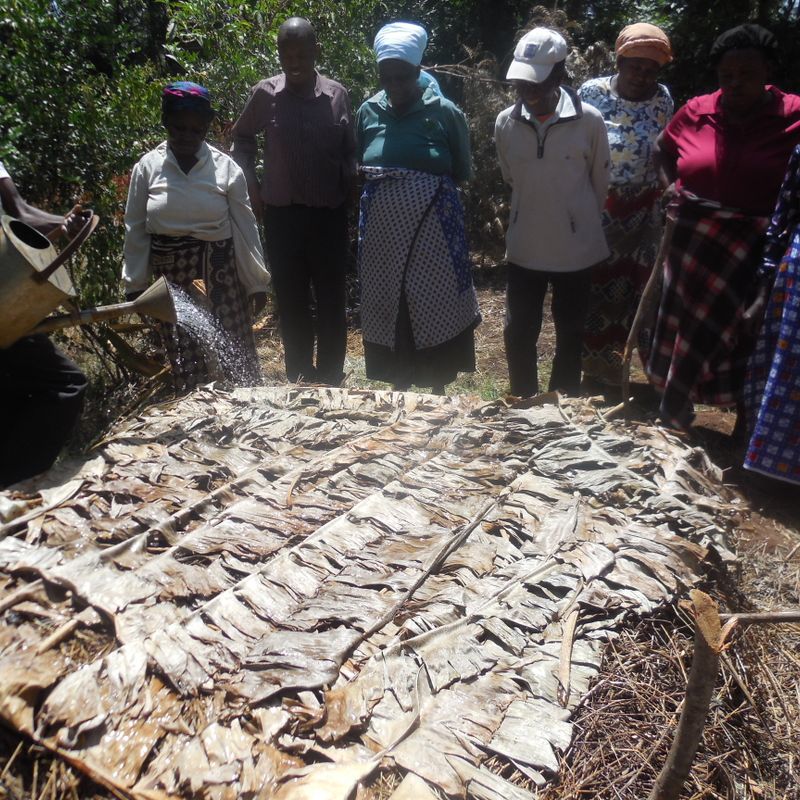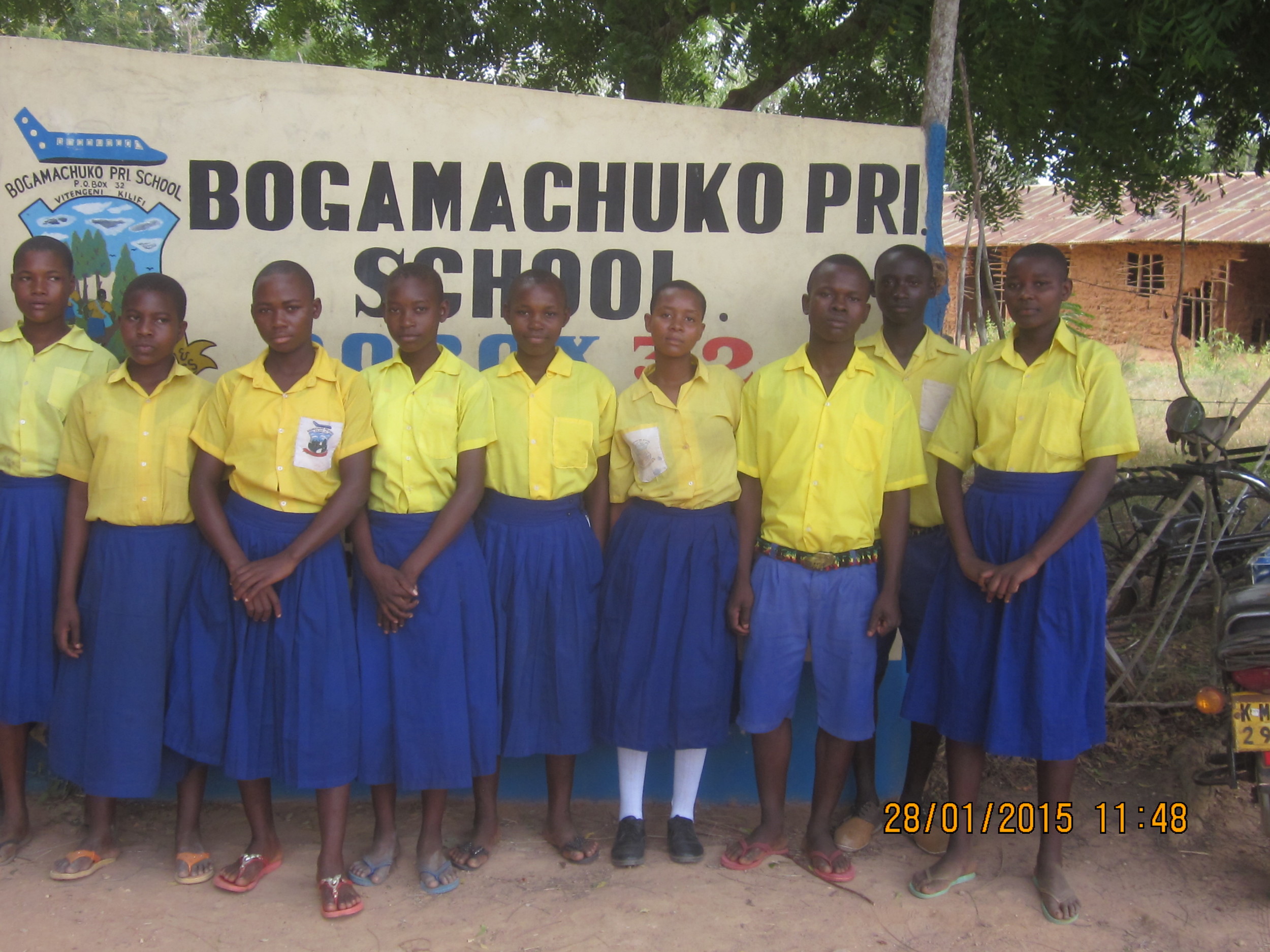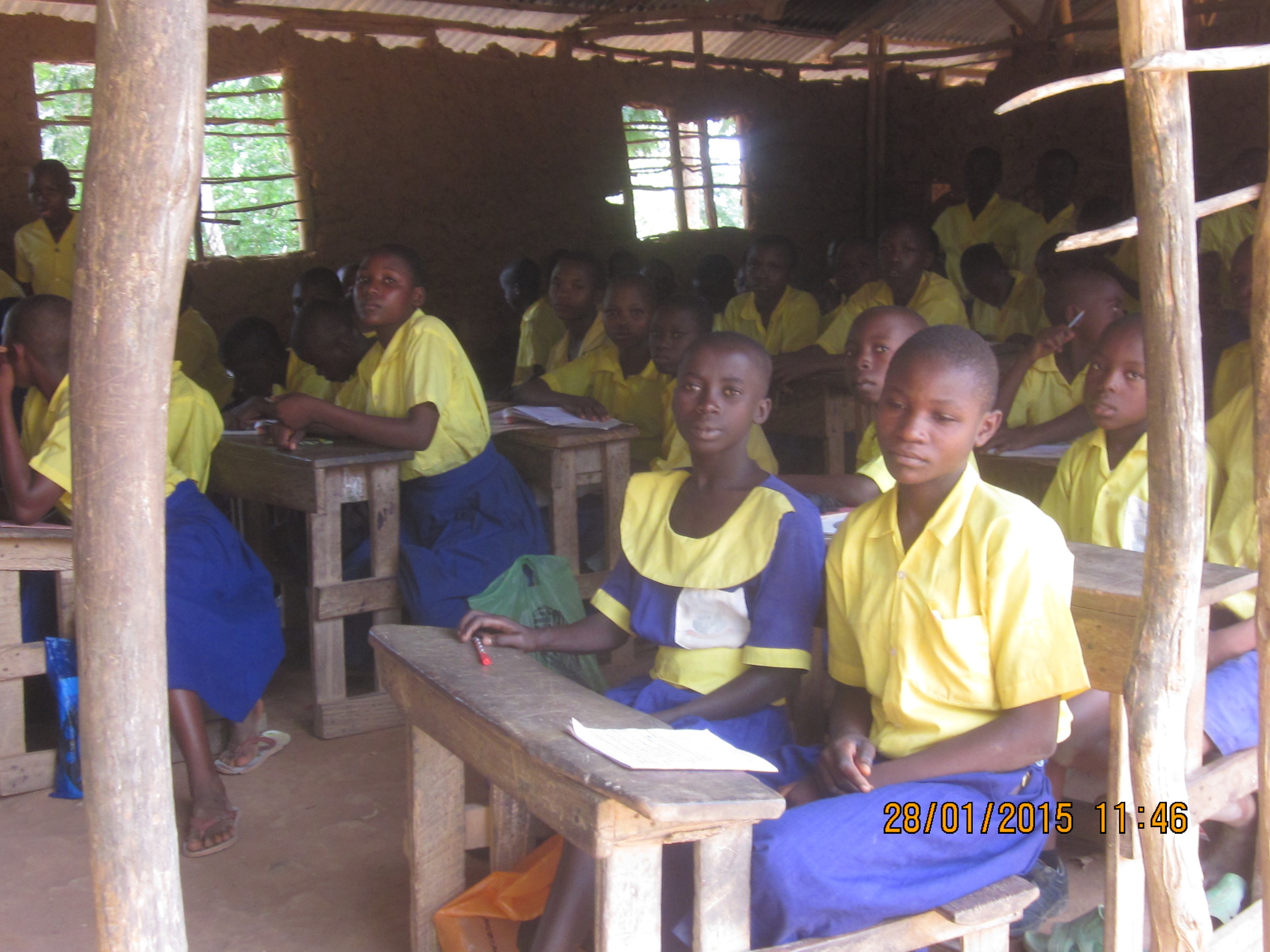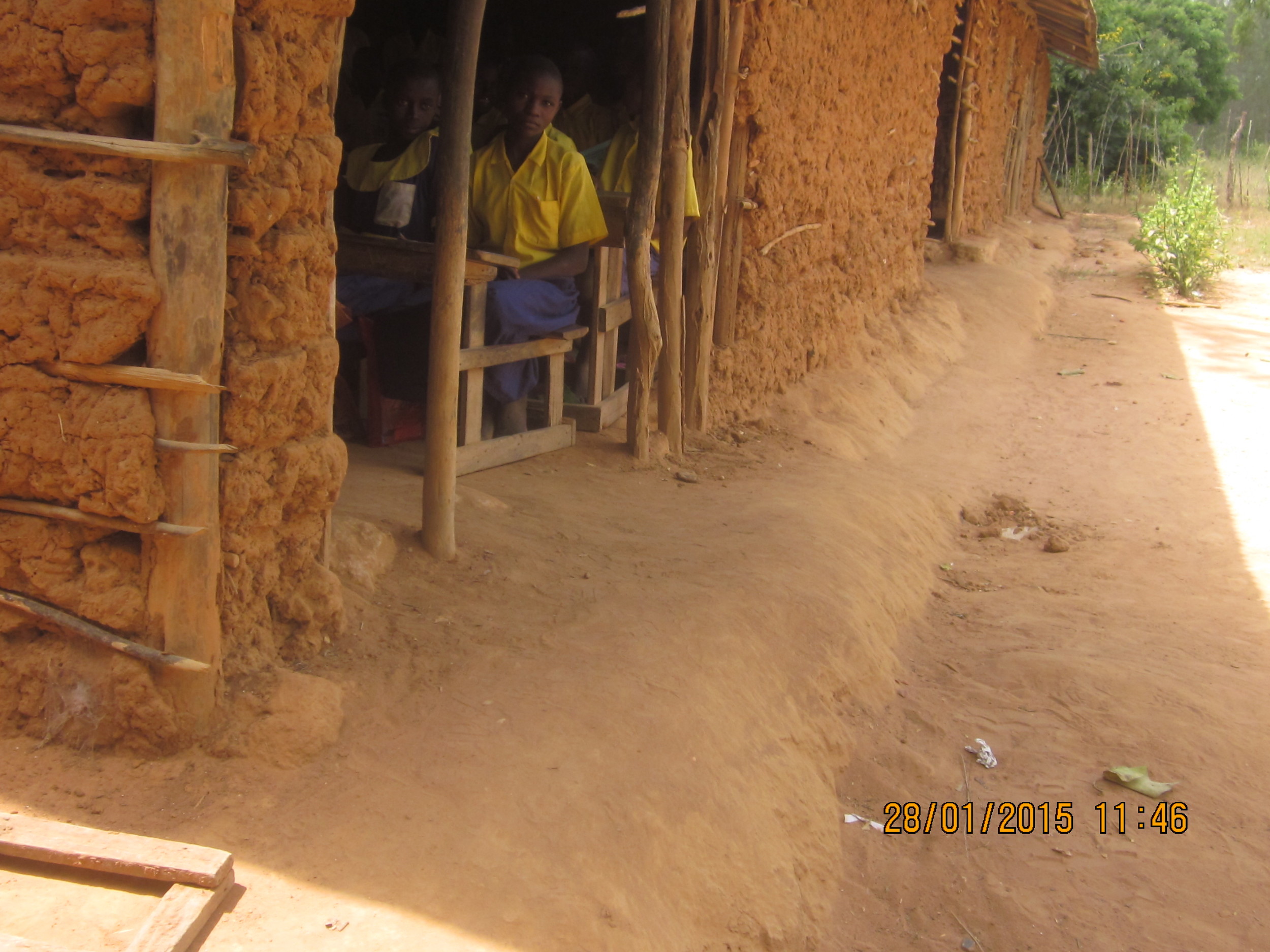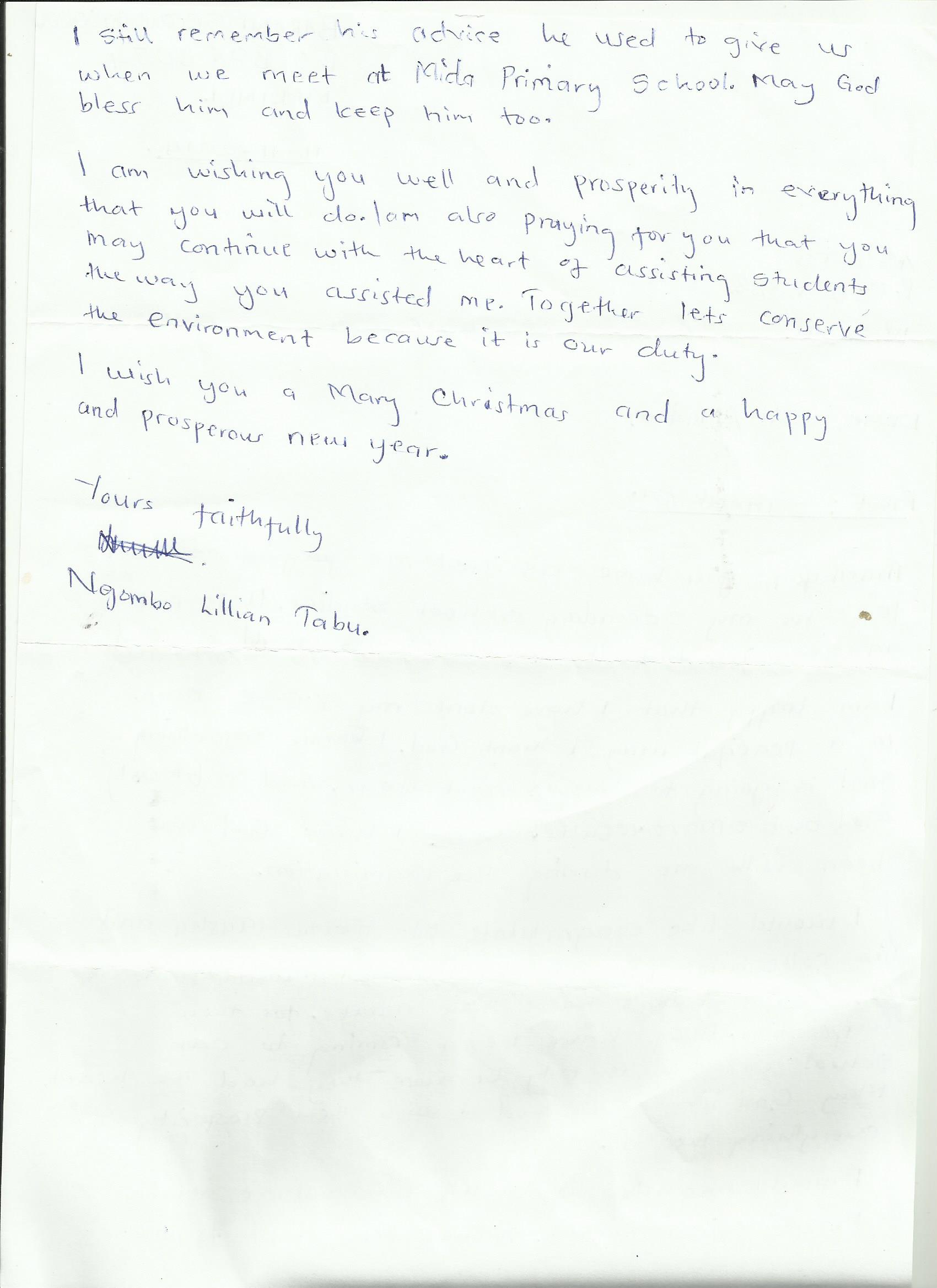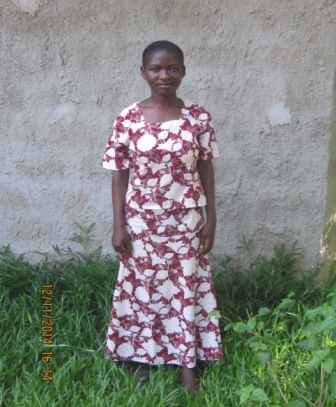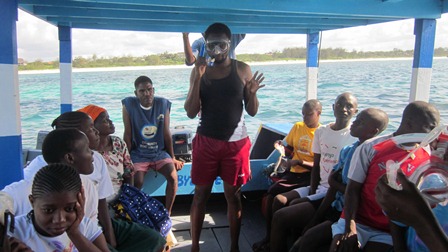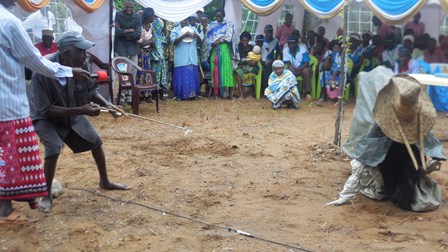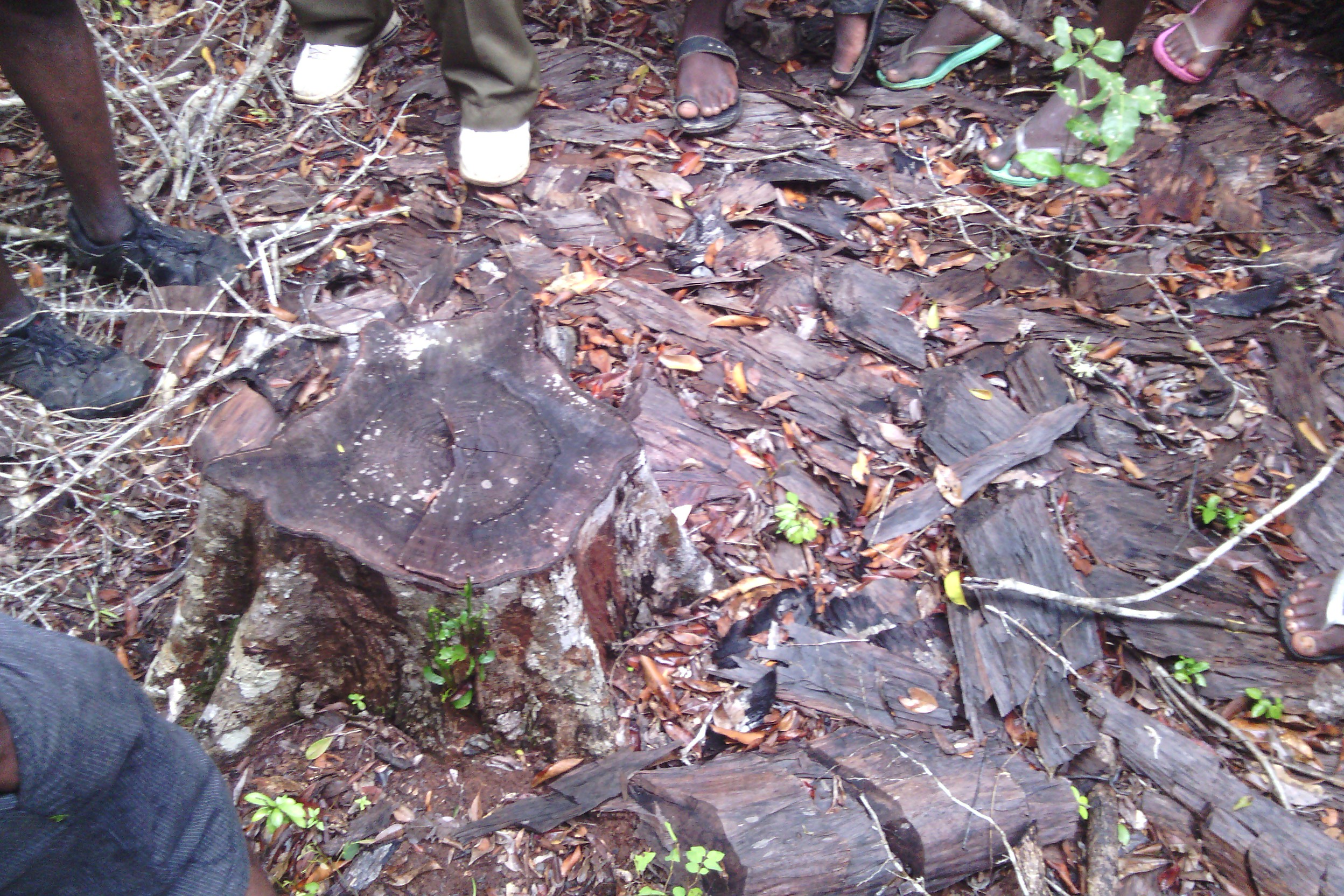A Rocha Kenya offers a great opportunity for conservation awareness and action to the community living around Arabuko-Sokoke Forest and Mida Creek.
MEET DORIS; THE ASSETS BENEFICIARY WHO GETS SATISFACTION THROUGH GIVING BACK TO HER COMMUNITY.
“Were it not for A Rocha Kenya’s ASSETS program, i don’t know how my life would be today,” said Doris Furaha an ASSETS beneficiary who hails from Kahingoni Village in Kilifi County.

Doris(left) with A Rocha Kenya's volunteer Rebecca Eastwood. Despite having passed her Kenya Certificate of Primary Education (K.C.P.E) examinations highly in the year 2010 at Kahingoni Primary School, Doris Furaha’s future seemed bleak. Her parents; who are small scale could barely afford to enrol her in a secondary because of their meagre earnings. The second born in a family of two could only pray for luck to come her way. And lady luck sure did knock on her door when she was selected as an ASSETs beneficiary in the year 2011.She was enrolled at Bahari Girls High School where she obtained a mean grade of B- in last year’s Kenya Certificate of Secondary Education (K.C.S.E) examinations. “Teaching these young boys and girls keeps me busy and helps me avoid bad company but to top it all sharing my knowledge with these young people gives me satisfaction. The sight of me here, is an enough motivation for them to work even more harder despite the challenges they face.” She said at Kahingoni Primary School where she volunteers as an English, Kiswahili, Social Studies and Science teacher. Doris has been a volunteer teacher at Kahingoni primary since May 2015.
Doris with her mum Even as she keeps on equipping these young ones with the knowledge she still holds onto her dream of becoming a clinical officer someday. It is her prayer that she will be able to join the university and study her dream course. ASSETS is a well targeted sustainable development programme that provides secondary school scholarships, meeting the economic and social needs of the local community whilst promoting the conservation of two of Africa’s most important ecosystems: Arabuko Sokoke and Mida Crreek in the Kenyan North Coast.
Re-awakening Ngong Forest User Groups
Ngong Forest is unique because it is the only indigenous forest located in the confines of a city. About 80% of its 208 species of trees and plants are indigenous. It is rich in biodiversity with about 190 species of birds and 35 species of mammals. Besides, it supports various rivers including Mbagathi and Ngong-Motoine. Our mission as A Rocha Kenya is to transform people`s lives so that they can conserve nature and we are committed to empowering the Ngong Forest user groups so that they can realise this objective. We are currently using the Community Forest Association trainings as a platform to address the challenges that the forest has been facing. Encroachment, urbanisation, mining, illegal logging and invasive species are some of the major challenges here. Olulua Forest Environmental Participatory group, one of the user groups we are working with, has realised a major achievement. On 27th January this year, we taught them how to make compost manure using Lantana camara and Tithonia diversifolia. The group has embraced this fully and are now composting using the above mentioned weeds which are alien. These species are rich in Nitrogen, Phosphorous, Potassium, Calcium and Manganese. This is an innovative and environmentally friendly way of turning harmful invasive weeds into beneficial uses. One could say, ‘Killing two birds with one stone.’
Members gathering Lantana camara.
Sprinkling water onto the compost.
A Trip to ASSETS Schools
It is on a Wednesday morning, the 28th day of January. It is 8 am as we leave our Gede office. We are visiting ASSETS schools to establish a list of the pupils who scored atleast 320 marks in the final exam; Kenya Certificate of Primary Education(KCPE). Our Maruti crawls through a dusty road and before long , we arrive at Mijomboni Primary School.We issue the head teacher with an A Rocha Kenya newsletter before the Wild Life Club patron hands us the names of the pupils who, out of the 500 marks, were able to garner 320 or more. We have bursary application forms that we give to the patron, the pupils are to get them from him.This is what we are going to do in each of the other schools we are yet to visit.
The next school on our list is Girimacha and we drive along a dusty route winding on the edge of Arabuko Sokoke Forest. From here, we drive to Malanga and our car has to pass through an eroded path full of potholes and sometimes confine its wheels between gulleys. At around 11 am we arrive at Bogamachuko Primary School. The patron, here, gives us the list of the top perfomers and dares to inform the head teacher, who is in a meeting with parents, that ASSETS team has arrived. The head teacher comes out promptly. I see it on her face that she is very happy that we are here. 12 pupils. That is the number we get here, the largest so far.We leave Boga ( this is how they proudly abbreviate the name of their school here) and drive to Kahingoni, then Nyari, Mzizima, Mida and back to Gede in the evening. What a round!
We look at the list.We have 45 pupils with atleast 320 marks. Then we remember that our budget is not as fat and we will have to recruit only 30 of them to the bursary scheme this year. We would later do assessment which involves collecting the application forms and visiting the pupils in their homes to interview them. One of the decisive criteria in this assessment is living close to Arabuko Sokoke Forest or to Mida Creek atleast 3 years before sitting the exam.
At some point I remember what Peter and Miranda Harris, the A Rocha founding couple, said," [E]very A Rocha family that we visit around the world, we tell them how ASSETS has brought hope to the young generation and is progressively changing people`s perceptions and attitudes towards conservation" This reminds me of Boga, the best ASSETS school this year. I have taken one photo of a few pupils standing in front of their school`s sign board and realised that some other pupils in a room, that is worthy quite a trouble of upgrade, were staring at me and I can not quite tell the speed with which I captured them too, when their teacher said," These are visitors from A Rocha Kenya. We need help and I know that they can help us" Faces of pupils yearning for hope.
Here at A Rocha Kenya, we are glad that our readers, supporters and donors do not disappoint. They are a generous lot that progressively are making ASSETS be a story of hope.
Launching of the green schools program
A Rocha Kenya’s Conservation Officer Mr. Festus was privileged to attend a launching of the Green Schools program which was initiated By His Excellence President Uhuru Kenyatta in Nyandarua County at Mikinga Primary school. This was then to be replicated in the whole republic, it was time for coast to launch this program and Bale Primary School in Ganze Sub-County was the focal point for the event.
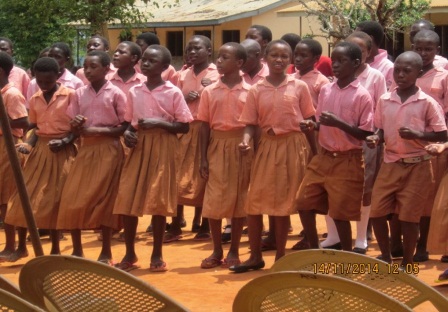
The event was graced by the Minister for Environment and Natural resources in Kilifi County Hon.Mwachitu, Head of Conservancy Coast Mr. Nderitu and Ecosystem conservator Mr.Maina. There were lots of entertainment during the forum; Bale primary school traditional dancers really entertained the guests with their traditional songs and dances.
This was really encouraging seeing people taking charge in an Event like this which goes hand in hand with the Objectives of A Rocha Kenya as an Organization.
" A land which the LORD thy God careth for: the eyes of the LORD thy God are always upon it, from the beginning of the year even unto the end of the."Deuteronomy 11:12.
Gratitude: A lively sense of future benefit
Remember the story of the ten lepers in Luke 17:11-19? How Jesus healed them and only one came back to show his appreciation to God? I will never forget this one time i attended a Sunday school service in one of my friend's church; Moses, a Reverend at St. Andrew's ACK church. The teachings for that day was about the ten lepers-after reading the bible verse he asked the children what they thought about the story; one little boy said,"Jesus must have been so happy that somebody thanked him" i was marveled at the response of the little boy. How many times do you seat down and reflect on the countless blessings God has bestowed you and appreciated ? We are pleased by the letter below that one of the ASSETS beneficiaries Ngombo Lillian Tabu wrote us showing her sincere appreciation to ASSETS and the A Rocha Kenya in general.
THE ASSETS CAMP
The ASSETS Program conducts camps in two folds one when A Rocha staff go to the schools and camp for a week, this happens in April in every calendar year. The other camp happens in August in every calendar subject to funding. The August camp invited participants are beneficiaries, parents and wildlife clubs of Kenya Patrons from selected areas. The objective of this event is to impact the beneficiaries with environmental conservation knowledge so that they able to use it in school and at home with their parents and friends.
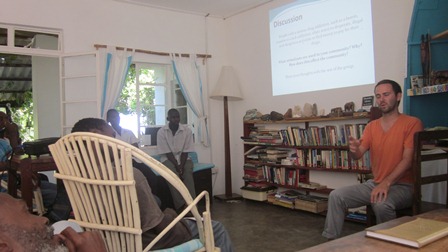
The topics that are emphasized on include Creation care “ God is the creator of everything and man was created to take care of God’s creation”, A Rocha’s five Cs-conservation, community, cross-cultural, cooperation and Christianity, ASSETS conditions, Career choice and development and drug abuse and HIV/AIDS.
In addition that the beneficiaries are also taken to snorkeling, Gede ruins, Mida creek where they visit our Eco-facilities: tree house at Gede ruins, the boardwalk at Mida creek (enjoying the biodiversity around).
It has been two years now since our last ASSETS camp; we are hoping and praying to raise enough funds to hold one next year (April 2015).
Inspiring entertainment by the ASSETS beneficiaries and their parents
On the 7th of October 2014, we held a grand opening ceremony for the new Environmental Education resource facility. Bishop Julius Kalu officiated the official opening.We had several entertainments as the ceremony was taking place from primary school students, an ASSETS beneficiary, a choir and a play by the community. The ASSETS beneficiary a young bright man from Gede boy’s high school gave a small talk on how the program has played an important role in his life and the importance of conserving the environment.
The primary school students presented two songs about the dangers of not conserving the environment, the importance and urged the people to conserve the environment. The choir also did a wonderful job to emphasize on the same singing a wonderful song about the environment.
The community wasn't left behind they performed a play: a group of parents whose kids benefit from the program. They illustrated very well why people should not go around poaching elephants and other wild animals and the consequences of such actions.
The entertainment was...i cant really find the right words to describe it but let me say it was simply breathtaking!
MEKATILILI SCHOOL VISIT
Imagine a world without sustainable land, or living oceans! Our natural resources exist in a fragile balance and are vulnerable to environmental changes. That’s why it’s important that we all do our part to conserve, preserve, and care for the Earth’s resources and protect the environment that sustains us.

A Rocha Kenya team made a visit to Mekatilili School and taught the pupils the importance of being good stewards of the earth- for all of us have to share the Earth's fragile ecosystems and precious resources, and each of us has a role to play in preserving them.
The theme of the days environmental education was;” ecosystem is a complex set of relationship among the living resources, habitats, and residents of an area.” The function was successful and pupils were encouraged and promised to take care of the environment.
We need to be proactive in protecting the earth’s ecological balance. If we are to go on living together on this earth, we must all be responsible for it.
ARABUKO SOKOKE SNARE WALK...
In a forest ecosystem, living things are interdependent, and they are also dependent on water, light, temperature, space, topography, soil type, chemicals, nutrients and other factors. If something in an ecosystem changes drastically, for example, if there is a sudden change in weather or even cutting down forests for development or agricultural purposes obviously reduces their biodiversity.

A Rocha Kenya joined the David Ngala, two KFS rangers, Mvera wa ASSETS parents and the beneficiaries themselves for a snare walk in Arabuko sokoke forest. The purpose of the snare walk was to create awareness and to help remove any snares they come across and take action on any other illegal activities.
We dint observe any active snares but we saw two old snares (probably 3months old), logging of trees for timber and building. It was a productive walk for the Mijomboni parents and beneficiaries had firsthand experience of what poachers have turned our forest into.
We are hoping and praying that the word will spread, the destruction of our forests to stop and conserving it to be our passion.








